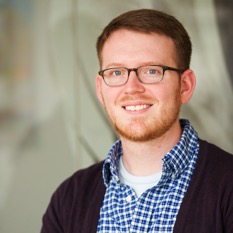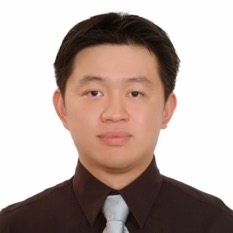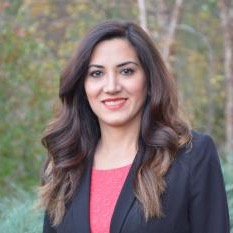Purdue Polytechnic welcomed new faculty members this year who have a wide variety of research interests.
 Austin Toombs is an assistant professor of computer graphics technology. He earned a master’s degree and Ph.D. in human-computer interaction design at Indiana University and was a postdoctoral research associate at Newcastle University. Toombs also earned a bachelor’s degree in computer science from Ball State University.
Austin Toombs is an assistant professor of computer graphics technology. He earned a master’s degree and Ph.D. in human-computer interaction design at Indiana University and was a postdoctoral research associate at Newcastle University. Toombs also earned a bachelor’s degree in computer science from Ball State University.
Toombs is researching the impact digital technologies have on the formation and maintenance of interpersonal relationships in the context of communities.
“I want to learn more about how technologies can fit better into the kinds of caring relationships people develop with each other,” Toombs said. “From a human-computer interaction research perspective, we do not fully understand how the systems and technologies we use on a daily basis are impacting the different kinds of care that people show for each other.”
Purdue Polytechnic’s history of technological innovation helped attract Toombs to his new position.
“My research perspective focuses on how technologies and socio-technical systems fit into people’s lives,” said Toombs, “and I believe my research can complement and benefit from the Polytechnic’s existing strengths.”
 Peng Hao Wang, assistant professor of aviation technology, researches the use of composite materials to improve modern aircraft design and maintenance. Wang earned his bachelor’s degree, master’s degree, and Ph.D. at Purdue, studying under Ronald Sterkenburg, professor of aviation technology.
Peng Hao Wang, assistant professor of aviation technology, researches the use of composite materials to improve modern aircraft design and maintenance. Wang earned his bachelor’s degree, master’s degree, and Ph.D. at Purdue, studying under Ronald Sterkenburg, professor of aviation technology.
For his master’s thesis, Wang noted that mechanical fasteners are installed only for redundancy in the adhesive joints used in today’s composite aircraft, adding weight to the aircraft while providing no tensile strength to those joints unless adhesives fail. He proposed a new composite hybrid joint design which employs two different types of attachments to reduce the amount of load induced in the adhesive joint and increase the overall strength of the hybrid joint.
Wang also recognized that field repair methods haven’t kept pace with the evolution of design and manufacturing techniques during the industry’s decades-long transition from aluminum to composite materials. Without effective field repair methods, airplanes must return to specialized sites equipped for composite manufacturing and maintenance, which decreases the time planes are in service and increases operators’ costs. Other field repair techniques, including the Double Vacuum De-Bulk (DVD) method, are commonly used for field repairs today, Wang said, but they can be complex, time consuming, and inconsistent.
“My research perspective focuses on how technologies and socio-technical systems fit into people’s lives, and I believe my research can complement and benefit from the Polytechnic’s existing strengths.”
For his doctoral research, Wang developed the Composite Aircraft Field Repair Method (CAFRM), a method which simultaneously accomplishes numerous steps of the repair process in the field, and studied whether specimens made via CAFRM and other repair methods differ in void content, volume fraction, shear strength, and fracture toughness.
Although further development and testing is needed, Wang believes it’s possible for CAFRM to evolve into an alternative repair method which would be available at more aircraft maintenance, repair and operations (MRO) facilities than legacy methods.
Wang’s current research projects include testing the behavior of composite materials when exposed to different types of chemicals and alternative repair methods for unmanned aerial systems. He is also researching whether students studying aviation maintenance benefit from exposure to environments resembling actual industry repair facilities.
Childhood interests in motorsports and aviation led to Wang’s composite materials research. “As composite materials became more popular in both motorsports and aviation,” he said, “my interest in the materials grew.”
“I’m happy to be back at Purdue and to have the opportunity to contribute to the University and its students,” said Wang.
 Jiansong Zhang, assistant professor of construction management technology, is working to develop and leverage advanced technologies to support construction engineering and management, construction automation, and sustainable infrastructure. He works with technologies including building information modeling (BIM), natural language processing (NLP), artificial intelligence, virtual reality, and construction robotics.
Jiansong Zhang, assistant professor of construction management technology, is working to develop and leverage advanced technologies to support construction engineering and management, construction automation, and sustainable infrastructure. He works with technologies including building information modeling (BIM), natural language processing (NLP), artificial intelligence, virtual reality, and construction robotics.
Although BIM has the potential to allow different parties involved in the same project to exchange information about all phases of a product’s life cycle such as planning, design, construction, operation/maintenance, and demolition/remodeling, Zhang said that a fundamental problem remains. There is an inability to exchange information seamlessly between different BIM platforms due to issues such as model inconsistency and missing data, and he said that existing research efforts to address this lack of interoperability have focused on standardization and semantic modeling.
“Technology is the bridge between science and our daily lives. As a technology guy, I said to myself, ‘This is the place to realize my dream.’”
Zhang is currently researching how to scientifically and empirically study intrinsic properties of architecture, engineering, and construction (AEC) objects, as well as how to discover their invariant signatures, for supporting seamless, universal, and flexible interoperability in BIM.
“If this research is successful,” Zhang said, “it could open the door for BIM analysis to become fully automated and for BIM models to have universal interoperability.” This would be applicable in construction engineering and beyond, he said, noting that the research could make it easier to specify materials for future construction in different environments.
“After my interview, I fell in love with many aspects of Purdue Polytechnic,” said Zhang. He is inspired by Elon Musk and hopes to make a contribution to the construction engineering and management domain. “Technology is the bridge between science and our daily lives. As a technology guy, I said to myself, ‘This is the place to realize my dream.’”
Zhang earned a Ph.D. in civil engineering from the University of Illinois at Urbana-Champaign, a master’s degree in civil and environmental engineering from Carnegie Mellon University, and a bachelor’s degree in construction management from Huazhong University of Science and Technology.
 Kereshmeh Afsari, assistant professor of construction management technology and computer graphics technology, and Manoj Patankar, school head and professor of aviation technology, also joined the college this year.
Kereshmeh Afsari, assistant professor of construction management technology and computer graphics technology, and Manoj Patankar, school head and professor of aviation technology, also joined the college this year.
